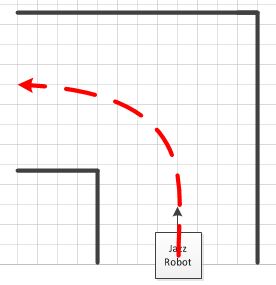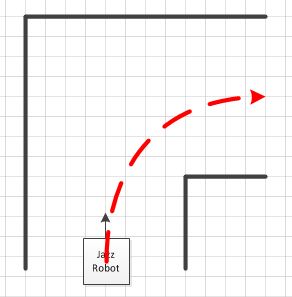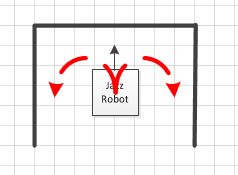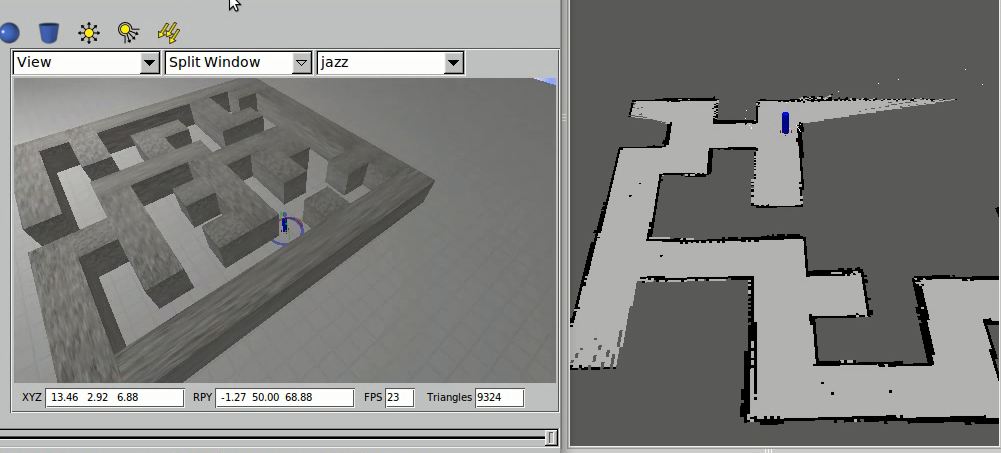Embedded Motion Control 2012 Group 9: Difference between revisions
No edit summary |
No edit summary |
||
| Line 126: | Line 126: | ||
2. Secondly, the maze may have islands in it. Unless all the walls are eventually connected to the outside, you may wander around forever without reaching the exit. <br> | 2. Secondly, the maze may have islands in it. Unless all the walls are eventually connected to the outside, you may wander around forever without reaching the exit. <br> | ||
<br> | <br> | ||
http://www.robotix.in/rbtx09/tutorials/m4d4 | |||
'''To solve this problem, we can use Camera for navigation''' | '''To solve this problem, we can use Camera for navigation''' | ||
| Line 136: | Line 137: | ||
2. Move to the cell that has minimum cell value<br> | 2. Move to the cell that has minimum cell value<br> | ||
3. If possible the robot must try to go straight.<br> | 3. If possible the robot must try to go straight.<br> | ||
http://www.robotix.in/rbtx09/tutorials/m4d4 | |||
Revision as of 14:42, 28 May 2012
Group Members :
Ryvo Octaviano 0787614 r.octaviano@student.tue.nl Weitian Kou 0786886 w.kou@student.tue.nl Dennis Klein 0756547 d.klein@student.tue.nl Harm Weerts 0748457 h.h.m.weerts@student.tue.nl Thomas Meerwaldt 0660393 t.t.meerwaldt@student.tue.nl
Objective
The Jazz robot find his way out of a maze in the shortest amount of time
Requirement
The Jazz robot refrains from colliding with the walls in the maze
The Jazz robot detects arrow (pointers) to choose moving to the left or to the right
Planning
An intermediate review will be held on June 4th, during the corridor competition
The final contest will be held some day between June 25th and July 6
Progress :
Week 1 :
Make a group, find book & literature
Week 2 :
Installation :
1st laptop :
Ubuntu 10.04 (had an error in wireless connection : solved)
ROS Electric
Eclipse
Environmental setup
Learning :
C++ programming (http://www.cplusplus.com/doc/tutorial)
Chapter 11
Week 3 :
Installation :
SVN (Got the username & password on 8th May)
Learning :
ROS (http://www.ros.org/wiki/ROS/Tutorials)
Jazz Simulator (http://cstwiki.wtb.tue.nl/index.php?title=Jazz_Simulator)
To DO :
end of week 3
Finish setup for all computers
3 computers will use Ubuntu 11.10 and 1 computer uses Xubuntu 12.04
Week 4 :
We did a brainstorm session on what functions we should make in the software, the result is below.

Week 5 :
We made a rudimentary software map and started developing two branches of software based on different ideas. The software map will be discussed and revised in light of the results of the software that was written early in week 6. The group members responsible for the lecture started reading/researching chapter 11.

We decided to work on two branches of software, developing different ideas, in parallel. The first branch is based on the software map above. We started writing two nodes, one to process and publish laser data and one controller node to calculate and follow a trajectory. The former node reads laser data from the /scan topic and processes this to detect whether the robot is driving straight in a corner, detect and transmit corner coordinates and provide collision warnings. The second node is the controlling, which uses odometry data to provide input coordinates (i.e. a trajectory) for the robot to follow. The controller implemented is a PID controller, which is still to be tuned. The I and D actions might not be used/necessary in the end. The controller node will also use the laser data provided by the laser data node to be able to plan the trajectory for the robot. A decision algorithm (i.e. go left or right) is still to be developed.
Implementation So Far & Decision We Made
1. Navigation with Laser
We are using 7 laser points with variety degrees as shown below :
1. The 0 is used for detecting the distance between the robot and the wall in front of the robot, it is also used for anti collision
2. The -90 and 90 are used to make the position of the robot looking forward and keep the distance between the robot and side wall
3. The -30, -60, 60, and 30 are used to detect the position of the free way (left side or right side)
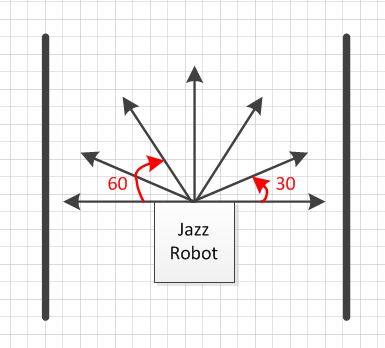
2. Robot Movement
we designed the movement of the robot as show in the picture below. We want to make the robot turn the corner like one-fourth of circle, so it will cut the time because it has shorter path than turn the corner with 90 degrees movement
b. Turn T connection
Because we have not already implemented the camera vision to help robot navigation, the movement of the robot either turn to right or left depends on the wall follower algorithm. If Righ Hand Rule activated, so the robot will go to right and vice versa.
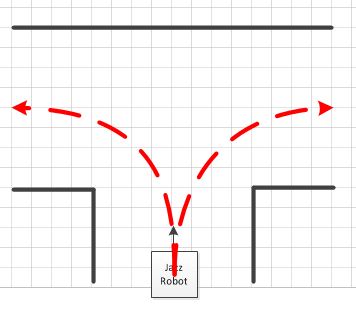
d. Avoid Dead end
The robot we will avoid dead end

3. Building map with Laser & Odometry
The map is used to give information where the current location of the robot is. For future development this map also can be used for implementing Tremaux's Algorithm (http://www.youtube.com/watch?v=6OzpKm4te-E). We are trying to do that, so our robot would not go to the same place twice.
4. Algorithm
There are a lot of algorithms to solve the maze problem (http://en.wikipedia.org/wiki/Maze_solving_algorithm) , the simplest basic idea that can be implemented easily is using Wall follower (Right Hand Rule of Left Hand Rule). We are trying to find the best algorithm that give us the shortest time to find exit
a. We have already implemented the Wall follower algorithm
This would be fine except for two things.
1. Firstly, you may have to visit almost the entire maze before you find the exit so this can be a very slow technique.
2. Secondly, the maze may have islands in it. Unless all the walls are eventually connected to the outside, you may wander around forever without reaching the exit.
http://www.robotix.in/rbtx09/tutorials/m4d4
To solve this problem, we can use Camera for navigation
b. We also have already implemented the random mouse algorithm
But to make it more intelligent we want to add memory (Modified FloodFill), so the robot won't go same place twice (http://www.youtube.com/watch?v=DVB_twrqlu8)
As the cells are mapped with the numbers as shown in the figure, at each cell the robot is expected to take three decisions.
1. Move to cell which it has gone to least
2. Move to the cell that has minimum cell value
3. If possible the robot must try to go straight.
http://www.robotix.in/rbtx09/tutorials/m4d4
